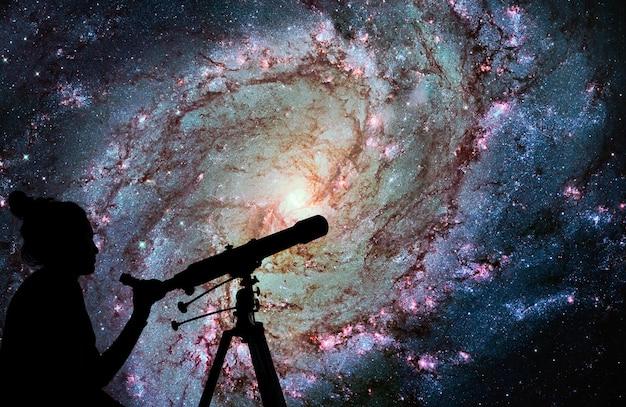Are you ready for an out-of-this-world experience? Mark your calendars for March 2023, because the Messier Marathon is back, and it promises to be an astronomical adventure like no other. Whether you’re a seasoned stargazer or a newbie to the night sky, this event is a must-attend for all astronomy enthusiasts. From the coveted Messier Index to the longest marathon time, we’ve got the inside scoop on everything you need to know. So grab your telescopes, bring your sense of wonder, and get ready to embark on a celestial journey under the stars.
Messier Marathon 2023: A Night to Remember
Introduction
The Messier Marathon, a thrilling event beloved by stargazers and astronomy enthusiasts, is set to take place in 2023. If you’re wondering what the Messier Marathon is all about and how you can participate, you’ve come to the right place. In this article, we’ll delve into the details of the Messier Marathon 2023 and explore why it’s an event you won’t want to miss. So grab your telescope and let’s embark on a celestial adventure!
What is the Messier Marathon
If you’re new to the world of astronomy, you may be wondering what exactly the Messier Marathon entails. Well, prepare to have your mind blown. The Messier Marathon is an annual event where star enthusiasts attempt to observe all 110 objects listed in the Messier Catalogue in a single night. Yes, you heard that right – over a hundred objects! These objects include galaxies, nebulae, star clusters, and more. It’s like a treasure hunt in the night sky, and trust me, it’s a thrilling challenge!
The Challenge of the Marathon
Now, you might be thinking, “A hundred objects in a single night? How is that even possible?” Well, my friend, it’s no easy feat. The Messier Marathon requires careful planning, precise timing, and a whole lot of patience. With only one night to complete the challenge, observers need to strategize their viewing sequence and meticulously scan the sky. It’s like a cosmic scavenger hunt, and every object you find feels like a victory. But beware, the clock is ticking – you don’t want to miss out on any of these celestial wonders!
Preparing for the Messier Marathon 2023
Participating in the Messier Marathon requires some preparation. To ensure a successful night of stargazing, you’ll need certain essentials. First and foremost, a good telescope is a must. It’s your trusty companion on this astronomical quest. Additionally, having star charts and guides handy will help you navigate the night sky more efficiently. Oh, and don’t forget warm clothing and some snacks – stargazing can get chilly, and you wouldn’t want to stargaze on an empty stomach, would you?
Tips and Tricks for a Stellar Experience
Now, let’s dive into some tips and tricks to make your Messier Marathon experience even better. Firstly, find a dark sky location away from city lights for optimal visibility. You’ll want to minimize light pollution for the best stargazing experience. Secondly, make sure to check the weather forecast. Clear skies are a stargazer’s best friend! Lastly, join a group or invite some friends along. Stargazing is more fun when you can share the awe-inspiring beauty of the night sky with others.
The Messier Marathon 2023 promises to be a night to remember. Whether you’re a seasoned stargazer or a beginner, this event is an opportunity to challenge yourself, explore the wonders of the universe, and create unforgettable memories. So mark your calendars and get ready for a night filled with cosmic delights. The Messier Marathon awaits – are you up for the challenge?
Messier Index: Navigating the Cosmos
Journey to the Stars
Exploring the night sky has always captured the imaginations of stargazers everywhere. There’s a sense of wonder and mystery that comes with gazing at the stars, wondering what secrets they hold. If you’re a fan of astronomy, then you’ve probably heard of the Messier Index — a celestial treasure map that guides astronomers on a quest to observe 110 deep-sky objects. So, what exactly is the Messier Index, and why does it send astronomers into a frenzy?
The Sought-After Messier Objects
Imagine embarking on a cosmic scavenger hunt, armed with nothing but a telescope and a desire to witness the wonders of the universe firsthand. The Messier Index serves as your guide, directing your gaze towards the most fascinating objects in the night sky. From stunning nebulae and galaxies to mesmerizing star clusters, the Messier Index features a wide variety of celestial marvels, each with their own unique story waiting to be discovered.
A Brief History Lesson
Back in the 18th century, French astronomer Charles Messier compiled a list of fuzzy objects in the night sky that were often mistaken for comets. His intention was to ensure that these objects wouldn’t distract fellow astronomers from finding real comets. This list, known as the Messier Index, has since become a valuable tool for amateur and professional stargazers alike, guiding them on a cosmic adventure through the heavens.
A Cosmic Marathon
Witnessing all 110 Messier objects in a single night might seem like a daunting task, but that’s exactly what avid stargazers attempt during the legendary Messier Marathon. This annual event draws enthusiasts from all over the world who challenge themselves to spot all the objects in a single night. Picture the excitement and potential mishaps as they navigate the night sky, aiming to check off each elusive object on their list.
Tips and Tricks for a Successful Messier Marathon
Planning to take on the Messier Marathon yourself? Here are a few tips to make your cosmic quest a successful one:
Timing is Everything
The best time to attempt the marathon is during the Spring Equinox, when the hours of darkness and astronomical twilight are in perfect harmony. This gives you ample time to observe all the objects without the interference of daylight.
Know the Sky
Familiarize yourself with the night sky. Use star charts, mobile apps, or a reliable telescope to locate the Messier objects easily. Knowing their approximate positions and recognizable features will save you valuable time during the marathon.
Get the Right Gear
Invest in a quality telescope with a good aperture and a wide field of view. Having a comfortable observing setup, including a cozy chair and warm clothing, is also essential for those long nights under the stars.
Team Up
Consider joining a local astronomy club or participating in group marathons. Sharing the experience with fellow stargazers not only enhances the fun but also allows for collaboration and gaining knowledge from seasoned astronomers.
Happy Stargazing!
So, if you’re ready to embark on a cosmic adventure and witness the wonders of the Messier Index, gear up, gather your friends, and get ready to explore the depths of the universe. Whether you participate in the Messier Marathon or simply enjoy observing the Messier objects at your own pace, one thing is for certain — the beauty of the night sky will leave you in awe, igniting a lifelong passion for the cosmos. Happy stargazing!
Messier Marathon 2023: A Celestial Adventure
What is the Messier Marathon
If you’re a fan of stargazing and the wonders of the universe, then the Messier Marathon is an event you don’t want to miss. The Messier Marathon 2023 is an astronomical extravaganza that brings together amateur astronomers from around the world to observe and document the famous Messier objects. These objects, cataloged by French astronomer Charles Messier, are a collection of stunning celestial sights that include galaxies, nebulae, and star clusters.
Where and When
The Messier Marathon 2023 will take place at a prime location for stargazing, where the sky is dark and free from light pollution. The exact location may vary depending on local conditions, but popular spots such as deserts or remote mountaintops are usually chosen for their optimal viewing conditions. Mark your calendars for the night of March 21st, 2023, as this is when the marathon will kick off. Be prepared for a night of stargazing and astronomical exploration like never before!
How Does the Marathon Work
During the Messier Marathon, participants attempt to observe and identify all 110 Messier objects in a single night. Sounds like an impossible task? Well, it certainly poses a challenge, but that’s what makes it so exciting! Astronomers armed with telescopes, star charts, and plenty of caffeine embark on a race against time to tick off as many Messier objects as possible before the night ends.
The Strategy and Equipment
To increase your chances of successfully completing the Messier Marathon, it’s essential to come prepared. Prioritize the brighter objects that are easier to spot first, and then work your way through the fainter ones as the night progresses. A good telescope with a wide field of view will be your best friend for this celestial scavenger hunt. Other handy tools include a red flashlight (to preserve night vision), star charts or mobile apps for navigation, and warm clothing to brave the nighttime chill.
The Joys and Challenges
Participating in the Messier Marathon is not just about checking off a list of objects; it’s about immersing yourself in the awe-inspiring beauty of the cosmos. From the intricate swirls of far-off galaxies to the colorful wisps of nebulae, each Messier object has its own story to tell. However, it’s important to acknowledge that weather conditions and other unforeseen factors can pose challenges. Patience and flexibility are key when it comes to stargazing, and sometimes the unexpected can lead to even more thrilling discoveries.
Whether you’re a seasoned stargazer or a beginner with a newfound interest in astronomy, the Messier Marathon 2023 promises an unforgettable experience. Join fellow enthusiasts under a canopy of stars as you immerse yourself in the wonders of the universe. Get ready to be captivated, inspired, and perhaps even humbled by the vastness and beauty of the cosmos. So mark your calendar, prepare your equipment, and get ready to embark on a celestial adventure like no other. The Messier Marathon 2023 awaits!
Sky Events in March 2023
Plan Your Stargazing Adventure
Get ready for an unforgettable skywatching experience in March 2023! As part of the Messier Marathon 2023, there are several exciting celestial events happening throughout the month that’ll leave you in awe. So grab a comfy chair, pack your binoculars, and let’s explore what’s in store for all you stargazing enthusiasts out there!
A Celestial Spectacle: The March Equinox
To kick off the month, we have the March Equinox on the 20th. This means that the sun will be directly above the equator, resulting in equal day and night lengths. It’s the perfect time to marvel at the Earth’s tilt and witness the balance between light and darkness. Take a moment to appreciate the beauty of this celestial event and reflect on the wonders of our planet.
Say Hello to Mars
On the evening of March 5th, mark your calendars for a fantastic opportunity to catch a glimpse of the red planet, Mars. As Earth and Mars align in opposition, Mars will be at its closest approach to our planet. You’ll be able to spot its distinct reddish hue shining brightly in the night sky. Don’t forget to make a wish upon the “wandering star” that has captivated humans’ imagination for centuries.
A Dance of the Planets
As the month progresses, keep an eye out for a mesmerizing celestial dance between Jupiter and Saturn. On March 16th, these gas giants will appear in close proximity, creating a stunning planetary conjunction. Witnessing the convergence of these two massive planets is truly an awe-inspiring experience. It’s like seeing a cosmic ballet unfold before your very eyes!
Shooting Stars Galore
If you’re a fan of meteor showers, you’re in luck! March is host to the Quadrantids meteor shower, which peaks on the 6th of the month. Find a dark spot away from the city lights, lay back, and enjoy the show as these shooting stars streak across the night sky. Make a wish for each one you see, and who knows, your dreams just might come true!
Moon Phases and More
Throughout March, keep track of the moon phases to enhance your stargazing experience. A waxing crescent will kick off the month, gradually growing into a stunning full moon on the 12th. As the nights progress, immerse yourself in the magic of different lunar phases and let the moon guide your celestial explorations.
March 2023 is going to be a fantastic month for all stargazers and astronomy enthusiasts! From the March Equinox to stunning planetary conjunctions and meteor showers, the night sky is offering a grand spectacle of celestial events. So gather your fellow space enthusiasts, find a cozy spot, and prepare to be amazed by the wonders of the universe above. Happy stargazing!
Longest Marathon Time
The Ultimate Test of Endurance
When it comes to the Messier Marathon, completing the longest marathon time is the ultimate test of an astronomer’s endurance. In this grueling challenge, stargazers push themselves to the limit, attempting to spot all 110 objects in Charles Messier’s catalog within a single night.
An Astronomer’s Race Against Time
The quest for the longest marathon time is not for the faint of heart. It requires meticulous planning, strategic observation, and ample doses of caffeine. Astronomers must carefully choose their observing location, taking into account factors such as light pollution, weather conditions, and the position of the objects in the night sky.
The Trials and Tribulations
As the night unfolds, astronomers face an array of obstacles. From battling fatigue and sleep deprivation to contending with equipment malfunctions, the longest marathon time is a true test of one’s determination. It’s not uncommon for participants to spend hours navigating through the darkness, searching for elusive celestial objects.
Celebrating the Victorious
When an astronomer successfully completes the Messier Marathon within the longest marathon time, it’s cause for celebration. They’ve achieved something truly remarkable, showcasing their dedication and passion for the night sky. These triumphant individuals become legends in the astronomy community, inspiring others to embark on their own marathon journeys.
Tips for Aspiring Marathoners
If you’re thinking of taking on the challenge of the longest marathon time, here are a few tips to keep in mind:
-
Prepare for the Night: Get a good night’s sleep before the marathon. You’ll need all the energy you can muster!
-
Know Your Catalog: Familiarize yourself with Messier’s catalog beforehand. Knowing the objects’ locations will save you precious time during the marathon.
-
Stay Hydrated and Nourished: Pack snacks and water to keep yourself fueled throughout the night. Remember, marathoners need sustenance too!
-
Dress for Success: Be sure to wear comfortable clothing and dress appropriately for the weather. Layering is key in case temperatures drop during the night.
-
Embrace the Challenge: Remember, the longest marathon time is not just about completing a checklist; it’s about enjoying the journey and immersing yourself in the wonders of the night sky.
With these tips in mind, you’ll be well-prepared to tackle the astronomical feat of the longest marathon time. Are you ready to embark on an adventure that will push your limits and deepen your love for the cosmos? The stars are waiting!
Messier Marathon Order
Introduction
One of the most exhilarating events in the world of astronomy is the Messier Marathon. This all-night stargazing extravaganza involves spotting and observing as many Messier objects as possible within a single night. But with over 100 objects to choose from, what order should you follow to maximize your chances of success? In this subsection, we’ll explore the recommended Messier Marathon order and provide some tips and tricks to help you make the most of this cosmic challenge.
Starting with the Easy Targets
To kick off your Messier Marathon, it’s wise to start with the easier objects that are more visible and accessible early in the night. This includes favorites like the Pleiades (M45), Andromeda Galaxy (M31), and Orion Nebula (M42). By starting with these bright and prominent objects, you’ll get some early wins under your belt and build up confidence for the more challenging ones later on.
Climbing the Difficulty Ladder
As the night progresses, it’s time to tackle the slightly more challenging Messier objects. This is when you can set your sights on objects like the Whirlpool Galaxy (M51), Ring Nebula (M57), and the Hercules Cluster (M13). These objects may require a bit more patience and strategy to locate, but their beauty and uniqueness make them worthwhile targets for any aspiring astronomer.
Conquering the Elusive Objects
As the night deepens, it’s time to bring out the big guns and focus on the more elusive Messier objects. Objects like the Crab Nebula (M1), the Sombrero Galaxy (M104), and the Veil Nebula (M27) will test your skills and dedication. But fear not, intrepid stargazer, with a little perseverance and a dash of luck, these celestial wonders can be yours to behold.
The Final Stretch
The home stretch of the Messier Marathon is reserved for the most challenging objects. Objects like the Needle Galaxy (M83), the Black Eye Galaxy (M64), and the Dumbbell Nebula (M27) will truly put your observing skills to the test. But hey, if it was easy, everyone would be doing it, right?
Following a specific order during the Messier Marathon can greatly increase your chances of successfully observing as many objects as possible. By starting with the easy targets and gradually working your way up to the more challenging ones, you’ll have a thrilling and fulfilling night under the stars. So, grab your telescope, a comfy lawn chair, and get ready for a cosmic adventure like no other. The Messier Marathon awaits!
Star Gazing in March 2023
The Best Time to Get Lost in the Stars
March 2023 is a fantastic time for all the star enthusiasts out there! With the Messier Marathon just around the corner, you’ll have the perfect opportunity to indulge in some captivating star gazing. Whether you’re a seasoned astronomer or simply someone who appreciates the beauty of the night sky, March is the month to mark on your calendar.
What Makes March so Special
March is a month of transition. As the cold winter nights gradually fade away, the clear skies of early spring provide an ideal backdrop for observing celestial wonders. The longer hours of darkness, combined with less humidity, create optimal conditions for a breathtaking star gazing experience.
Unveiling the Astronomical Highlights
-
The Orion Nebula: Located in the prominent constellation of Orion, this celestial beauty is easily visible to the naked eye. Its vibrant colors and intricate details make it a favorite among both amateur and seasoned astronomers. In March, the Orion Nebula shines brightly and serves as a perfect starting point for your star gazing adventure.
-
The Pleiades: Also known as the Seven Sisters, this magnificent open star cluster is another highlight of the March sky. With its compact arrangement of stars, the Pleiades are a fascinating sight to behold. Grab your binoculars to get a closer look at this stellar wonder.
-
The Beehive Cluster: Nestled within the constellation of Cancer, the Beehive Cluster is a group of over a thousand stars. It resembles a swarm of busy bees, hence the name. This cluster is a treat for any stargazer, and March presents an excellent opportunity to locate it in the night sky.
Preparing for your Star Gazing Adventure
To make the most of your star gazing experience in March 2023, ensure you’re well-prepared. Here are a few tips to get you started:
-
Choose a Dark Sky Location: Find a spot away from city lights and light pollution to maximize your chances of seeing the stars clearly. National parks or rural areas make excellent choices.
-
Check the Weather Forecast: Before heading out, make sure the weather is on your side. Clear skies are essential for a successful star gazing session.
-
Bring Essential Equipment: A good pair of binoculars or a telescope will enhance your viewing experience. Don’t forget to pack warm clothing, a comfy chair, and some hot beverages to keep you cozy during your nocturnal expedition.
With these pointers in mind, you’re all set for an unforgettable adventure amidst the vastness of the cosmos. So, mark your calendar for the Messier Marathon in March 2023, and get ready to be captivated by the wonders of the night sky!



